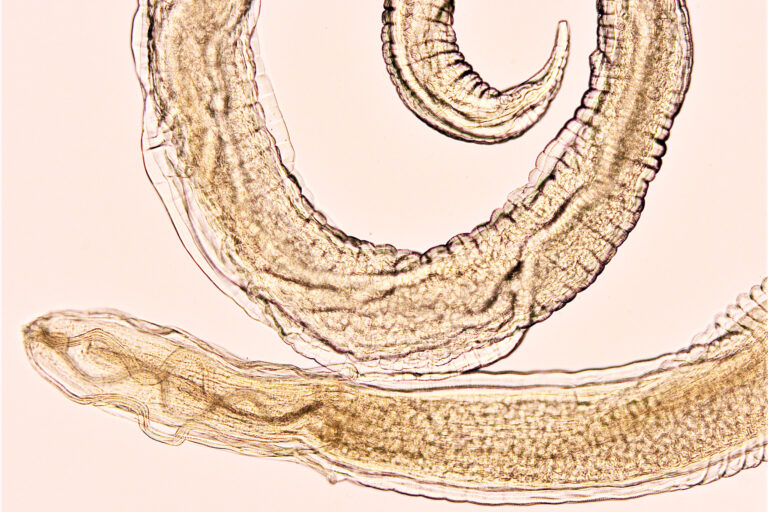Synhimantus laticeps

Order: SPIRURIDA
Family: ACUARIIDAE
AREA OF ORIGIN: World Wide
Hosts:
Birds of prey
Birds of prey
Nematodes of the genus Synhimantus are among the most common parasitic worms found in birds of prey. In these birds, Synhimantus laticeps primarily parasitizes the proventriculus (Krone 2000; Ferrer et al. 2004). According to Ebmer et al. (2017), male individuals can reach a body length of approximately 6 mm, while females can grow slightly larger, up to 9 mm. The posterior end of male individuals contains a structure called the spiculum, which is part of the copulatory organ and is species-specific (Acosta et al. 2010).
Human pathogenicity: Currently, there are no known cases of humans being infested with the nematode Synhimantus laticeps.
Exemplary Sources
-
Acosta, I et al. (2010)Acuaroid nematodes in the common kestrel (Falco tinnunculus) in the south of Spain. Veterinary journal (London, England : 1997), vol. 183, n° 2, p. 234–237.
-
Ebmer, D et al. (2017)Morphological and molecular genetic analysis of Synhimantus (Synhimantus) laticeps (Rudolphi, 1819) (Nematoda, Acuariidae) from the barn owl (Tyto alba) and the common kestrel (Falco tinnunculus) in Austria. In : Helminthologia, vol. 54, n° 3, p. 262–269.
-
Ferrer, D et al. (2004)Helminths isolated from the digestive tract of diurnal raptors in Catalonia, Spain. The Veterinary record, vol. 154, n° 1, p. 17–20.
-
Krone, O (2000)Endoparasites in free-ranging birds of prey in Germany. In : Raptor biomedicine III, p. 101–116.